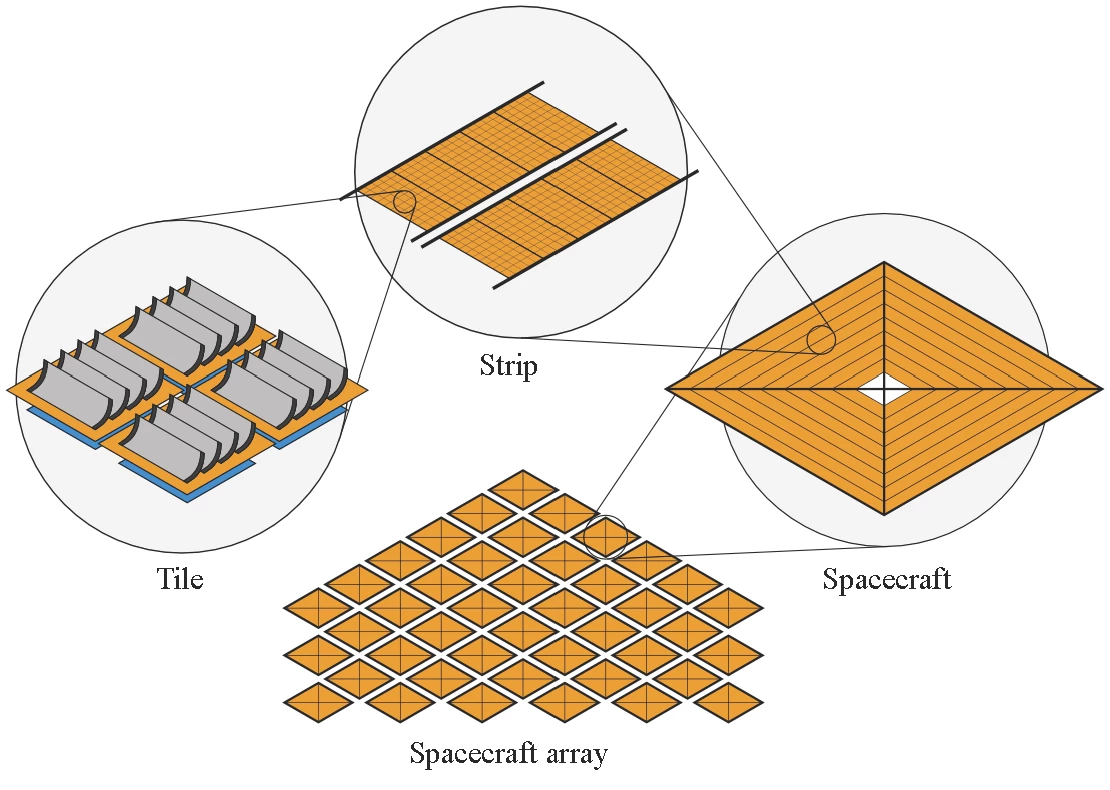Caltech's wildly ambitious space solar project, buoyed by a massive hundred-million-dollar donation, is preparing to launch its first prototypes into orbit. These cutting-edge ultralight structures will collect, convert and wirelessly send energy.
It's obvious why you'd want to harvest solar energy in space: 24-hour access to virtually limitless solar energy without so much as an atmosphere in the way, let alone weather or obstructions. The energy potential in space is some eight times better per square meter of solar panel than here on Earth. The problem has always been how you'd do it – and indeed, how much it'll cost. The costs involved in launching, assembling and maintaining equipment in space are astronomical. The scale of a worthwhile space solar installation is mind-boggling, and unprecedented problems present enormous hurdles at every step of the journey.
Undeterred, and indeed energized by the challenge, a team at Caltech has been working on the Space Solar Power Project for nearly a decade now. It launched with an incredible endowment of more than US$100 million from Irvine Company Chairman Donald Bren back in 2013 – a donation that has only recently been disclosed – and was boosted to the tune of US$17.5 million by Northrop Grumman in 2015.

The project has been proceeding in essentially three streams. One group has been working on insanely lightweight, high-efficiency photovoltaic cells with power-to-weight ratios some 50-100 times greater than even the solar panels currently used on the ISS and modern satellites.
A second team is focused on developing ultra-lightweight, miniature, low-cost equipment to convert DC power from the solar panels into radio frequency power, then beam it down to Earth, using phase manipulation to electronically steer the beam toward receiver arrays down on the surface.
These two teams have combined their progress into functional prototypes of a "tile" – about 10 cm (3.9 in) square, combining solar energy capture, conversion to RF and wireless transmission. These highly integrated, very flexible tiles weigh less than a tenth of an ounce (less than 2.8 g) each, and they're designed to fold down to a configuration with essentially zero wasted space, to be put into a launch vehicle and sent into orbit, where they'll unfold themselves.
You can see a prototype tile harvesting light and transmitting energy to a receiver in the video below.
Thus, the entire space solar array has been conceived of as an ultra-modular assembly. The tiles are designed to be incorporated into 2-m-wide (6.6-ft) strips measuring up to 60 m (197 ft) in length. These strips are incorporated into modules measuring around 60 x 60 m (197 x 197 ft).
And thus a third group has been working on how to build a full-size array combining thousands of tiles into modules, and thousands of modules into a colossal solar harvesting and transmission array with an area around 9 sq km (3.5 sq miles). This group gets the challenge of creating ultra-lightweight, ultra-thin space structures for these modules that fold down incredibly tightly, and then unfurl autonomously into massive modules and hold their shape and position as the array whizzes through space like a flying carpet.
This team has already done some amazing work; inspired by Japanese origami and kirigami, they've designed and prototyped coiling, folding, self-assembling structures – including coilable joints – weighing just 150 grams per sq m (0.45 oz per sq ft). Some of these can be seen in the video below.
Then there comes the problem of angling its solar panels toward the sun as much and as passively as possible, while still electronically aiming its transmitters at giant receiver stations on the Earth below. And there comes the issue of exactly which orbit to take – a geosynchronous orbit constantly pointed at a single receiver on the Earth below, or a lower, cheaper orbit that would require multiple solar harvesters and multiple Earth-bound receivers.
The financial maths at this stage would appear to favor the latter; five solar arrays in a medium Earth orbit, decked out with double-sided solar harvesters and single-sided transmitters would appear to have the edge in terms of Levelized Cost of Energy (LCoE) even though such a system would require 39 space launches as opposed to just 13 for a single-array geosynchronous system – with many assumptions made, of course. But the cost of space solar energy would still be in the range of US$1-2 per kWh – a tough sell given that US electricity currently retails for less than US$0.17/kWh on average.
The level of difficulty here can probably best be described as comically ridiculous. And yet, under the leadership of Caltech Professors Sergio Pellegrino, Harry Atwater and Ali Hajimiri, the Space Solar Power Project team continues to chip away at the problem. This pioneering work has resulted in dozens upon dozens of published research papers.

In December this year, it'll also result in space-based prototype testing, a milestone reflecting the incredible budget this team gets to work with. It's unclear exactly how far the money will go on this project, but even $120 million is unlikely to make much of a dent in the towering stack of spondoolies needed to get a full-size space solar rig up and running.
New Zealand company Emrod made the argument to us earlier this month that it'd be much cheaper to build a terrestrial renewable energy harvesting network, and simply beam the energy around via satellite. But whatever the case, the sheer audacity of the Space Solar Power Project, as well as the fundamental advances it's making in several different areas, make it a project of great significance.
Enjoy a presentation on this groundbreaking work below.
Source: Caltech








